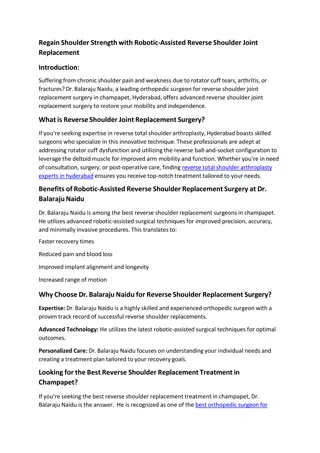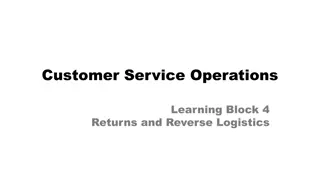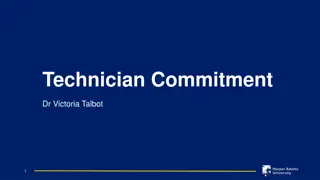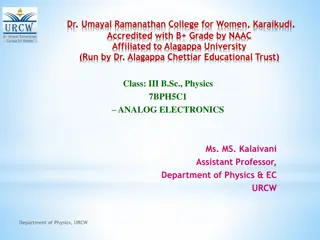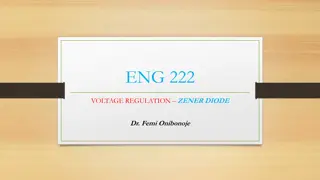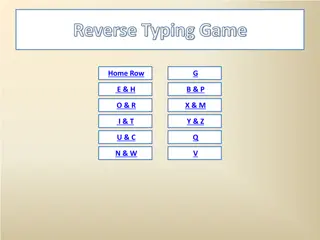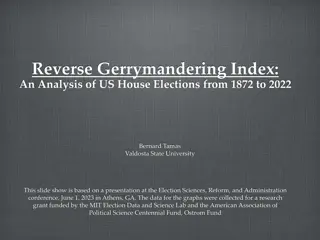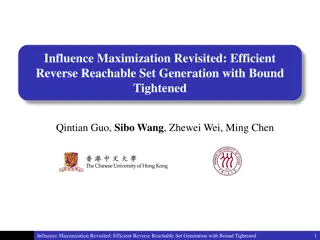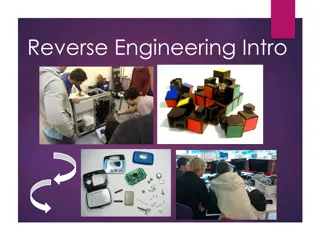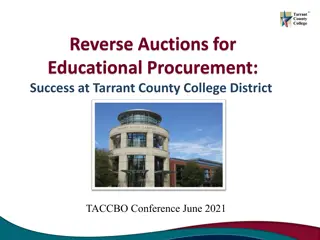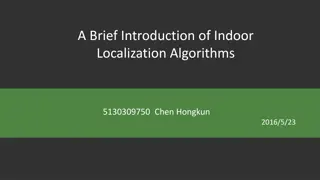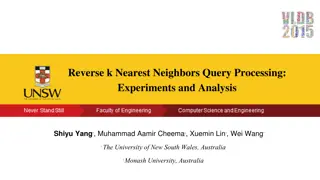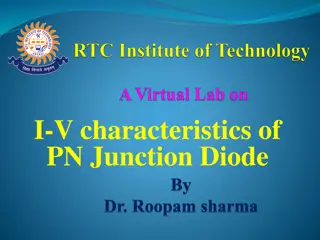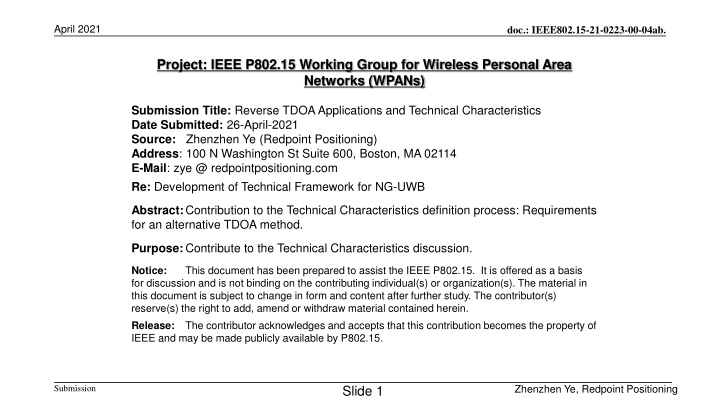
Technical Guidance for Proposals in WPANs Development
This document discusses the technical characteristics and requirements for the development of proposals in the field of Wireless Personal Area Networks (WPANs). It covers topics such as Reverse TDOA Applications, Traditional Assumptions for TDOA Infrastructure, and the integration of UWB technology into devices. The aim is to provide valuable technical recommendations and facilitate efficient proposal preparation and evaluation processes.
Uploaded on | 0 Views
Download Presentation

Please find below an Image/Link to download the presentation.
The content on the website is provided AS IS for your information and personal use only. It may not be sold, licensed, or shared on other websites without obtaining consent from the author. If you encounter any issues during the download, it is possible that the publisher has removed the file from their server.
You are allowed to download the files provided on this website for personal or commercial use, subject to the condition that they are used lawfully. All files are the property of their respective owners.
The content on the website is provided AS IS for your information and personal use only. It may not be sold, licensed, or shared on other websites without obtaining consent from the author.
E N D
Presentation Transcript
April 2021 doc.: IEEE802.15-21-0223-00-04ab. Project: IEEE P802.15 Working Group for Wireless Personal Area Networks (WPANs) Submission Title: Reverse TDOA Applications and Technical Characteristics Date Submitted: 26-April-2021 Source: Zhenzhen Ye (Redpoint Positioning) Address: 100 N Washington St Suite 600, Boston, MA 02114 E-Mail: zye @ redpointpositioning.com Re: Development of Technical Framework for NG-UWB Abstract: Contribution to the Technical Characteristics definition process: Requirements for an alternative TDOA method. Purpose: Contribute to the Technical Characteristics discussion. Notice: for discussion and is not binding on the contributing individual(s) or organization(s). The material in this document is subject to change in form and content after further study. The contributor(s) reserve(s) the right to add, amend or withdraw material contained herein. Release: The contributor acknowledges and accepts that this contribution becomes the property of IEEE and may be made publicly available by P802.15. This document has been prepared to assist the IEEE P802.15. It is offered as a basis Zhenzhen Ye, Redpoint Positioning Slide 1 Submission
April 2021 doc.: IEEE802.15-21-0223-00-04ab. Purpose of Technical Guidance Document Aliases: Technical Characteristics Framework, Technical Requirements Document, System Requirements Document Purpose: Provides technical guidance for preparation of proposals. The objective of this guidance is to provide technical recommendations for preparing and evaluating proposals, and should not be understood as mandatory requirements for the system design. The intent is to use a flexible and efficient process that provides sufficient descriptions of the technical drivers to enable relevant responses, with efficiency of effort while meeting the critical need for a timely amendment. Zhenzhen Ye, Redpoint Positioning Slide 2 Submission
April 2021 doc.: IEEE802.15-21-0223-00-04ab. Traditional Assumptions for TDOA Infrastructure: Anchors are resource rich Tags (things being located) Something needs to find the tag Tag may not need to find itself or anything else Tags are resource constrained Limited energy: Small (to no) batteries Limited processing power Limited on time Traditional TDOA puts smarts in the anchors Each tag transmits asynchronously Number of transmissions scale with number of tags Anchor Anchor TAG Anchor Anchor Zhenzhen Ye, Redpoint Positioning Slide 3 Submission
April 2021 doc.: IEEE802.15-21-0223-00-04ab. Another way to look at TDOA UWB integration into device like a phone enables powerful tag platform Resource assumptions change Density of potential things to be located (tags) change Capability of supporting large number of tags needed Applications change Location-awareness at tags Infrastructure may not need to know tag location Tag may or may not share location with others Anchor Anchor TAG Anchor Anchor Zhenzhen Ye, Redpoint Positioning Slide 4 Submission
April 2021 doc.: IEEE802.15-21-0223-00-04ab. Leveraging the new tag platform Everyone has one (or more)! Move smarts into tag Tag determines its location from multiple anchor signals Tag needs not transmit to locate itself Need infrastructure to provide location service to tags Location service coverage is seamless and easily expandable Anchors broadcast ranging information Anchors are coordinated Zhenzhen Ye, Redpoint Positioning Slide 5 Submission
April 2021 doc.: IEEE802.15-21-0223-00-04ab. Benefits of leveraging the new tag platform Fixed location spectrum usage, unlimited tag capacity Determined by anchor transmit schedules Independent of number of tags in the area Privacy Mobile device (tag) can be anonymous - figure out where it is by listening Mobile device can decide what to share Accuracy Accuracy comparable to traditional TDOA or two-way ranging Accuracy is independent of the number of tags in the network Support for fusion of UWB TDOA ranging with local sensors Leverage resources in the tag platform Improves performance without increasing network traffic Zhenzhen Ye, Redpoint Positioning Slide 6 Submission
April 2021 doc.: IEEE802.15-21-0223-00-04ab. Key Requirements Ability to scale number of locating tags without increasing network traffic or degrading location performance Ability to provide seamless and expandable location service Ability for devices to coordinate channel access for guaranteed location service Ability of the tag to control performance trade-offs Ability of the device to make privacy decisions Compatible and coexists with other ranging methods Zhenzhen Ye, Redpoint Positioning Slide 7 Submission

